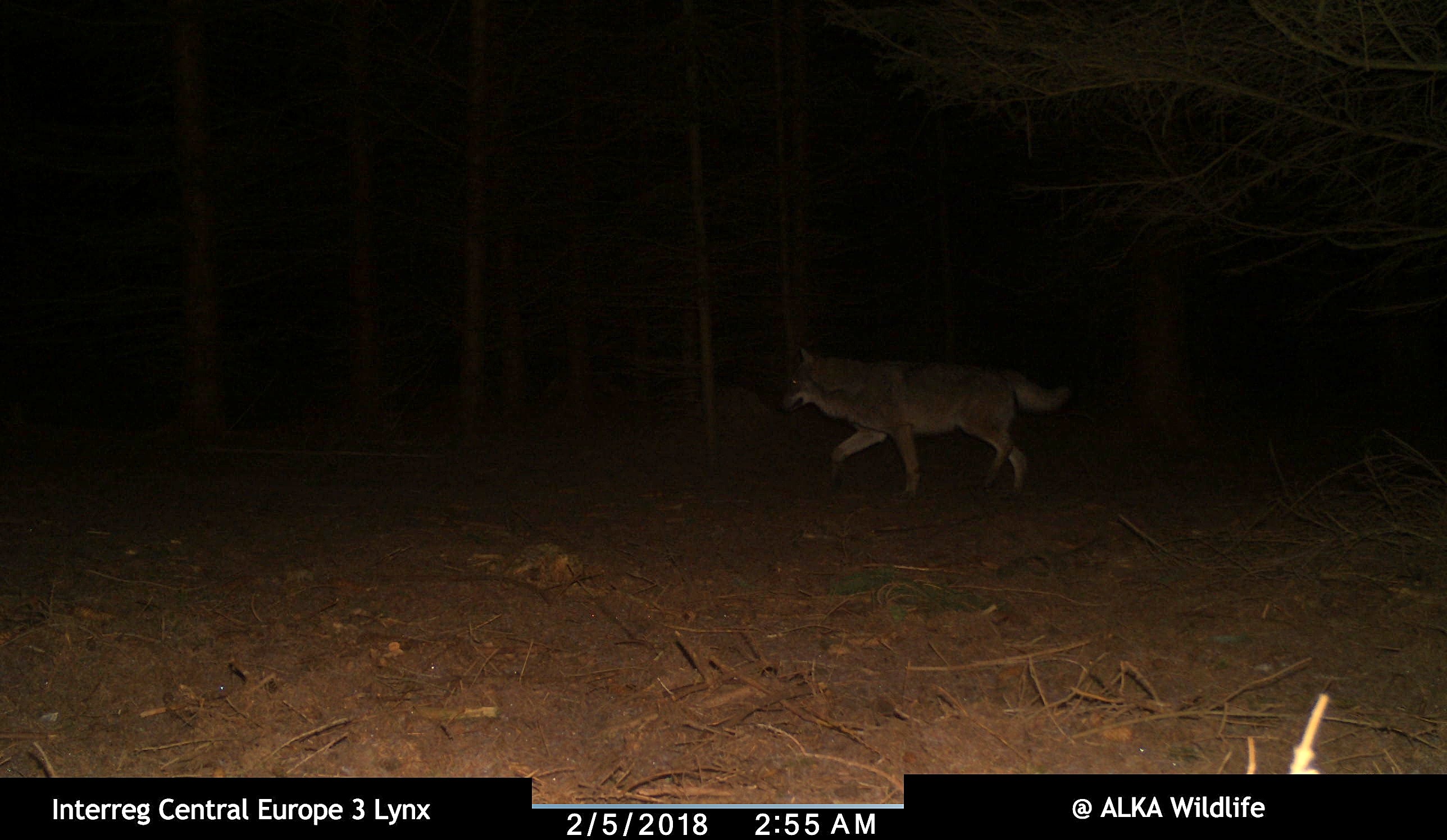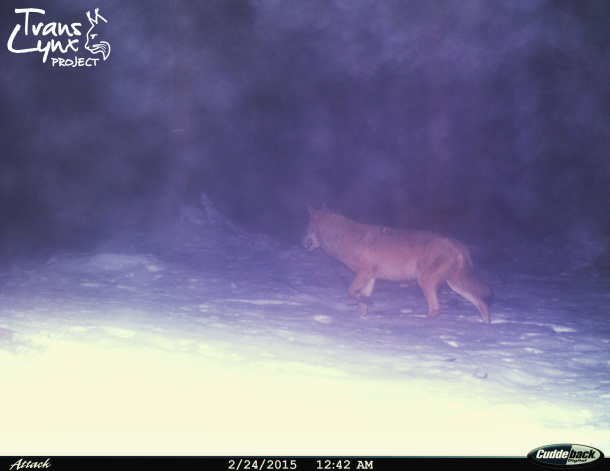The Return of the Wolf to Pošumaví

Camera traps placed by ALKA Wildlife, under the project 3Lynx project, have for the first time in history recorded the occurrence of a wolf in Netolice, South Bohemia. It is a lone wolf walking a forest road. There is no evidence that a wolf pair or a whole pack is moving in the area.
The last known Czech wolf, was shot in 1874 in the Lipka forest near Vimperk. Since then, only occasional observations came from Šumava, but evidence of its presence has missing.
In 2015, for the first time wolf was documented in Šumava, using camera traps under the TransLynx project. The wolf was capture on the cameras on the eastern edge of the Loučovice mountain range.

Following this, the first proof of reproduction in Šumava was capture by the Bavarian National Park, you can see the news story at idnes.cz.
In both 2017 and 2018, there was another increase in wolf records from Šumava and the first wolf attacks on sheep herds were recorded. The Šumava National Park Administration, as well as the Nature Conservation and Landscape Protection Agency of the Czech Republic and partners of the 3Lynx project have therefore started to provide sheep breeders with advice on how to prevent wolf damage. Methods such as installation of electric fences and the use of shepherd dogs have proved to be the most effective solutions. More information on these precautions and how to apply for compensation for damage caused by wolves on farm animals can be found at: www.navratvlku.cz.
The modern spread of the wolf in Šumava and Pošumaví is mainly due to the positive development of the wolf population in Lusatia, Saxony and the spread of young wolves into new areas (www.wolf-sachsen.de). Wolves have excellent migration skills, and are able to covered several hundred kilometres so the return of the wolf to Šumava is not such a surprise. Šumava is a natural, well-preserved area with extensive forest areas and an abundance of prey. It provides wolves with ideal conditions for life. Like the Eurasian lynx, the wolf is now returning to where it once lived and where it belongs.

You can find out more about the 3Lynx project here.

